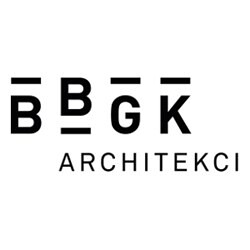Warsaw’s Katyń Museum is one of the five finalists of the European Union Prize for Contemporary Architecture – Mies van der Rohe Award 2017.
The museum constitutes an outstanding example of how pre-existing architecture can be employed to serve the designed purpose. The faraway forests which had witnessed the horrible Katyń massacres were somehow made present in a military fortification in the centre of the city. The exhibits tell the story of Katyń in a manner one could find in a book or a documentary.
“Our instincts could be summed up by the words of Peter Smithson: ‘things need to be ordinary and heroic at the same time. We were looking for an ordinariness whose understated lyricism is full of potential.’”
—Stephen Bates, Jury Chairman
The Katyń Museum was designed by Jan Belina Brzozowski and Konrad Grabowiecki with the team BBGK Architects, Jerzy Kalina (installations, site-specific) with the team Plasma Project, Justyna Derwisz, Adam Kozak and Krzysztof Lang with the team Maksa. It presents the tragic events of the Katyń massacre that took place during World War II and commemorates 22,000 Polish Prisoners of War murdered by Red Army.
“I am impressed by the simplicity and strength of the design. The use of brick, plaster, and stained concrete, rather than the more monumental materials that are usual for such memorials, gives the place a humble and contemplative atmosphere. The deep cut with its view of the sky is truly dramatic, and stands in stark contrast to the delicacy of the imprints left by the personal effects and the ephemeral quality of the names incised in the wall.”
—Aaron Betsky, Architect Magazine
The museum is located in the southern part of a 19th-century fortress—the Warsaw Citadel—and includes three historical buildings. The whole complex was designed as a park, with a symbolic Katyń forest in the centre of the main square. The 100 trees planted there refer to the truth about the dreadful war crime, which used to be concealed in the woods for more than 50 years. The main exposition is arranged on two levels of the Caponier—a historic fortification structure. The first level contains information about the Katyń massacre, where the visitors can learn about historical facts and see exhibits found in the mass graves in Katyń forest. The second level of the exhibition is devoted to personal tragedies of the victims’ families, constituting a place for contemplation.
The exit of the museum turns into the Death Tunnel—a 20-metre-long passage constructed from black concrete, designed by Jerzy Kalina. This dark corridor opens towards the Alley of the Missing Ones. “Missing” because the alley is filled with empty pedestals, on which only the professions of the deceased are engraved: “police officer, doctor, lawyer, architect…” The path leads further to the third building—the arcaded cannon stand with glazed arcades, displaying 15 plaques with the names of the 21,768 murdered officers.
Wherever the narration of the exhibition required it, the architects used stained concrete, turning it into a means of architectural expression. Parts of letters and other personal belongings of the victims are imprinted on the concrete, continuing the exhibition outside the buildings. The architectural expression here is especially strong. The gap between 12-meter-high walls dividing the Citadel leads in two directions: down—towards the plaques with the victims’ names, and up—towards the sky and light. An oaken cross placed among the trees concludes the dramatic story of Katyń.
“The origins of architecture lie as much in tombs and memorials as they do in shelter, and the Katyn Museum takes us back to that sense of the fixing in one place of lives that were lived, but are now gone. As a grave marker you come across in the forest, which was Adolf Loos’ definition of pure architecture, it is effective and clear, despite its remove from the actual location. It reminded me exactly of the alienating, removing, and making present that are at the core of monumental architecture.”
—Aaron Betsky, Architect Magazine

